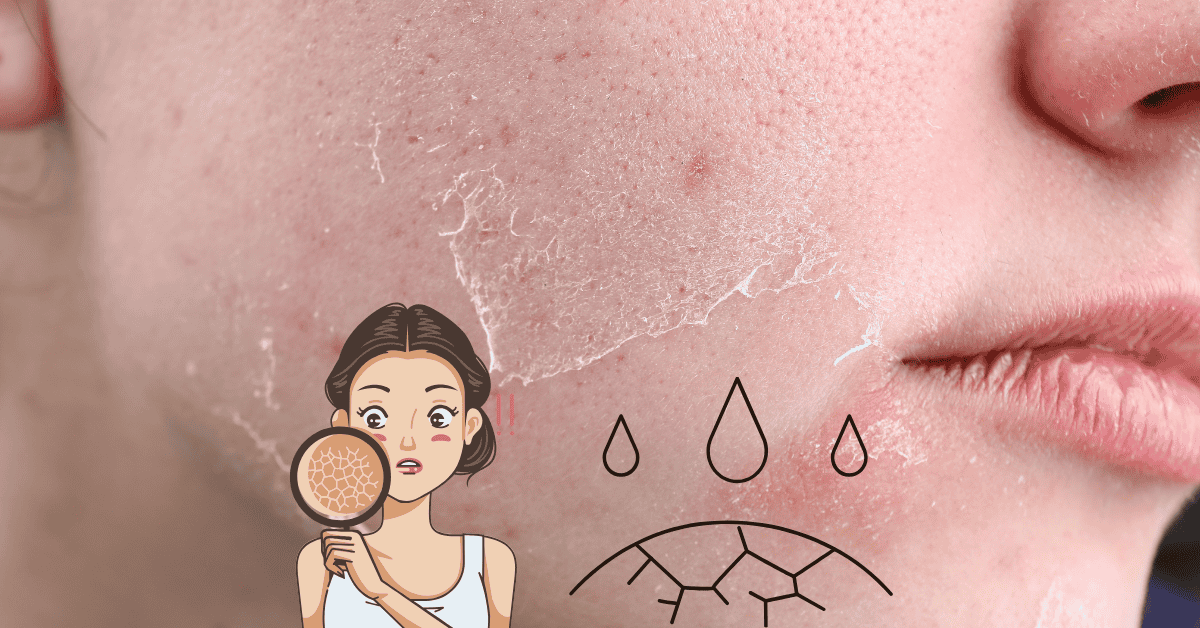Essential Steps in a Skincare Routine for Dry Skin
Cleansing: Choosing the Right Cleanser
Cleansing is the foundational step in any skincare routine, particularly for those with dry skin. It’s essential to choose a gentle cleanser that effectively removes impurities without stripping the skin of its natural oils. Harsh cleansers can lead to increased dryness and irritation, which can exacerbate existing skin issues.
Instead, opt for creamy, hydrating formulas that contain beneficial ingredients such as glycerin, hyaluronic acid, or natural oils. These components not only cleanse the skin but also help to retain moisture. When cleansing, use gentle techniques, such as massaging the cleanser onto damp skin and rinsing with lukewarm water.
Over-cleansing can further irritate dry skin, so it’s advisable to limit cleansing to twice a day—once in the morning and once before bed—to maintain a healthy moisture barrier.
Exfoliation: How to Exfoliate Without Irritating
Exfoliation is a critical step that helps to remove dead skin cells and enhance the overall texture of your skin. For those with dry skin, it’s important to exfoliate carefully to avoid irritation.
Chemical exfoliants, such as alpha hydroxy acids (AHAs) and beta hydroxy acids (BHAs), are generally gentler on dry skin compared to physical scrubs, which can be abrasive. AHAs are water-soluble and great for surface exfoliation,
while BHAs penetrate deeper into the pores, making them suitable for addressing any accompanying oiliness or clogged pores.
It’s best to start with exfoliating once a week and gradually increase frequency based on how your skin reacts. Always follow up with a hydrating serum or moisturizer to replenish moisture after exfoliating, ensuring your skin feels soft and smooth rather than tight or irritated.
Toning: The Benefits of Hydrating Toners
Toners can be an excellent addition to your skincare routine, particularly for dry skin. They help balance the skin’s pH and provide an extra layer of hydration, preparing the skin for subsequent products. Look for hydrating toners that contain soothing ingredients such as aloe vera, rose water, or chamomile.
These ingredients can help calm the skin while delivering essential moisture. Application is key; instead of using a cotton pad that may absorb too much product, consider applying toner directly to your palms and gently patting it onto your skin. This technique not only minimizes waste but also enhances absorption.
Incorporating a hydrating toner into your routine can make a noticeable difference, especially in terms of improving skin texture and overall hydration.
Moisturizing: Finding the Perfect Moisturizer
Moisturizing is perhaps the most critical step for those with dry skin. It’s essential to find a moisturizer that effectively hydrates and locks in moisture. Look for products that contain key ingredients such as ceramides, fatty acids, and occlusives like shea butter or petroleum jelly.
Ceramides help restore the skin barrier, while fatty acids nourish and repair the skin. Understanding the differences between creams, lotions, and ointments can also help you choose the right formulation. Creams are typically thicker and more emollient, making them suitable for nighttime use, while lighter lotions can be great for daytime.
Layering moisturizers can be beneficial as well; consider applying a hydrating serum followed by a cream for added hydration, especially in colder climates or during dry seasons.
Treatments: Targeted Solutions for Dry Patches
Sometimes, even with a solid routine, certain areas of the skin may remain persistently dry. Identifying these problem areas allows for more targeted treatment. Consider incorporating specialized products such as ointments, balms, or concentrated serums specifically designed to address dry patches.
Ingredients like urea, lanolin, and dimethicone can provide significant relief by sealing in moisture and providing a protective barrier. It’s essential to apply these treatments at the right time—after cleansing and moisturizing—to maximize their effectiveness.
Gently massage the product into the affected area, allowing it to absorb fully. This approach not only provides immediate relief but also aids in long-term skin health by preventing dryness from recurring.
Daily Skincare Routine for Dry Skin
Morning Routine: Steps to Start Your Day
Start your morning with a gentle, hydrating cleanser that effectively removes overnight impurities without stripping your skin’s natural moisture. After cleansing, apply a hydrating toner to balance your skin’s pH and provide an extra layer of moisture.
Next, use a nourishing serum rich in hyaluronic acid or vitamin E to draw hydration into your skin. After the serum, apply a rich moisturizer containing emollients like ceramides or shea butter to lock in moisture and create a protective barrier.
Finish off your morning routine with a broad-spectrum sunscreen of at least SPF 30 to shield your skin from harmful UV rays and prevent premature aging.
Evening Routine: Repair and Restore Overnight
In the evening, begin by removing makeup and impurities with a cleansing balm or oil, followed by your hydrating cleanser to ensure your skin is thoroughly clean without losing moisture. After cleansing, apply the hydrating toner again to prep your skin for the next steps.
Then, use a reparative serum with ingredients like peptides or niacinamide, which can help improve skin texture and support overnight recovery. Follow this with a thicker, more emollient moisturizer or an overnight mask to lock in hydration and prevent moisture loss while you sleep.
If you have specific dry patches, Hyperpigmentation ,consider applying a targeted treatment in those areas. To complete your evening routine, use an eye cream to nourish the delicate skin around your eyes, ensuring you wake up with refreshed, hydrated skin.

Weekly Skincare Tips for Enhanced Hydration
Incorporating Face Masks: Best Options for Dry Skin
Integrating face masks into your weekly routine can provide an extra boost of hydration. Look for masks that are specifically formulated for dry skin, typically containing ingredients like hyaluronic acid, glycerin, or natural oils.
Cream-based masks can be particularly beneficial, as they help to lock in moisture and nourish the skin. Aim to use a hydrating mask once or twice a week for optimal results, applying it after cleansing and toning for maximum absorption.
The Role of Facial Oils: When and How to Use Them
Facial oils can be a game-changer for dry skin, offering intense hydration and nourishment. You can apply facial oil after your moisturizer to seal in hydration or mix a few drops into your moisturizer for an added boost.
For those with very dry patches, applying oil directly to those areas can provide quick relief and enhance overall skin texture.
Lifestyle Tips to Support Dry Skin
Importance of Hydration: Drinking Water and Diet
Staying hydrated from the inside out is essential for maintaining healthy skin. Aim to drink plenty of water throughout the day, as proper hydration can significantly impact your skin’s moisture levels. Additionally, consider incorporating foods rich in omega-3 fatty acids, such as fatty fish, nuts, and seeds, into your diet. These nutrients help support skin barrier function and overall hydration.
Climate Considerations: Adjusting Your Routine for Weather Changes
Your skincare routine should adapt to seasonal changes and environmental conditions. In colder months, consider using thicker moisturizers and richer creams to combat dryness caused by cold air and indoor heating. In contrast, during hot and humid weather, lighter formulations may be more appropriate. Pay attention to your skin’s needs and adjust your products accordingly to maintain optimal hydration.
Common Mistakes to Avoid in Dry Skin Care
Over-Cleansing: How It Affects Dry Skin
One of the most common mistakes is over-cleansing, which can strip the skin of its natural oils and lead to increased dryness. Cleansing too frequently or using harsh cleansers can disrupt the skin’s barrier, making it more susceptible to irritation. Stick to cleansing twice daily and choose gentle, hydrating formulas to maintain your skin’s moisture balance.
Ignoring Ingredients: What to Look For and What to Avoid
When selecting products, it’s important to be mindful of ingredients. Look for moisturizers and treatments that contain hydrating ingredients like hyaluronic acid, glycerin, and ceramides. Conversely, avoid products with alcohol or fragrances, as these can exacerbate dryness and irritation. Familiarizing yourself with beneficial ingredients will empower you to make better choices for your skin.
Conclusion
In summary, maintaining healthy, hydrated skin requires a thoughtful skincare routine that incorporates both daily and weekly practices. Key steps include gentle cleansing, regular exfoliation, and consistent moisturizing, complemented by weekly face masks and the use of facial oils.
Additionally, adopting lifestyle habits such as staying hydrated and adjusting your skincare for climate changes will support your skin’s health.
Embrace the journey of developing a personalized routine that caters to your specific skin needs. By understanding your skin and making informed choices, you can effectively combat dryness and enjoy a radiant, hydrated complexion.
FAQs
What are the best cleansers for dry skin?
Look for creamy, hydrating formulas that don’t strip moisture.
How often should I exfoliate dry skin?
Exfoliate once a week and adjust based on your skin’s sensitivity.
Are face masks beneficial for dry skin?
Yes, hydrating masks can provide an extra moisture boost weekly.
When should I apply facial oils?
Use facial oils after moisturizer or mix them into your moisturizer.
How much water should I drink for healthy skin?
Aim for at least 8 glasses of water a day for optimal hydration.
Can climate affect my skincare routine?
Yes, adjust your products based on seasonal changes and humidity levels.



